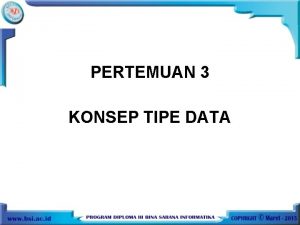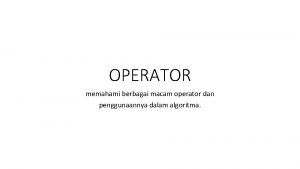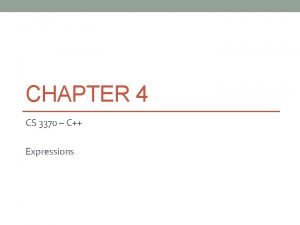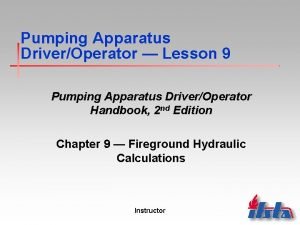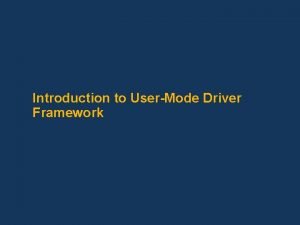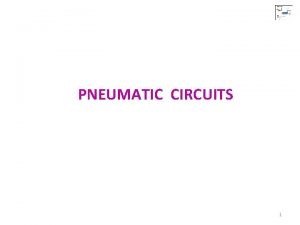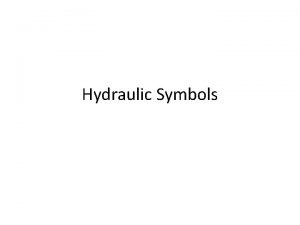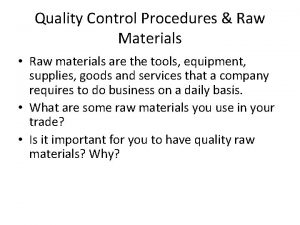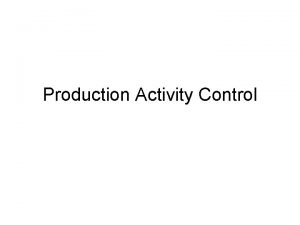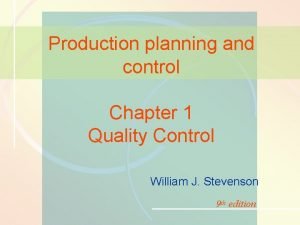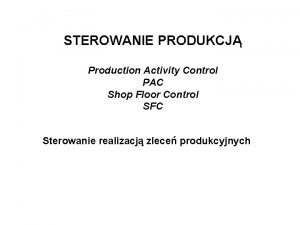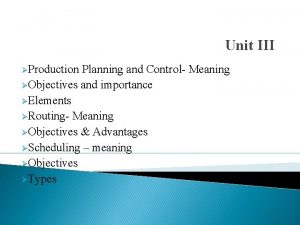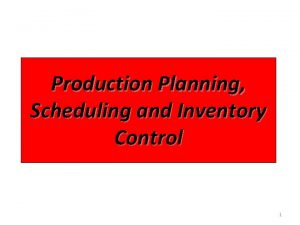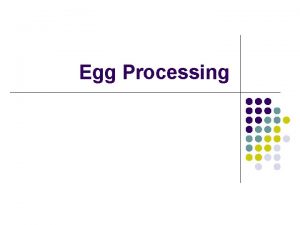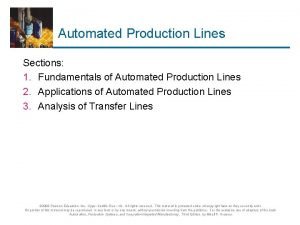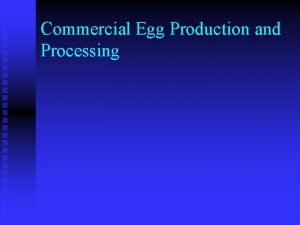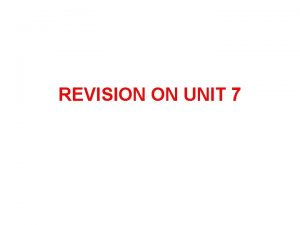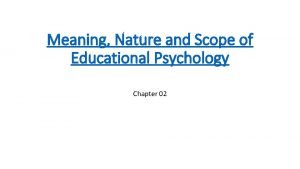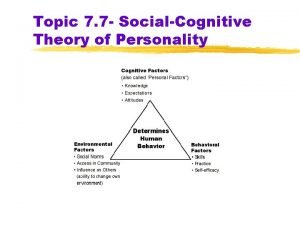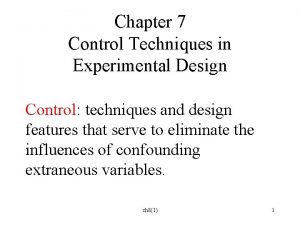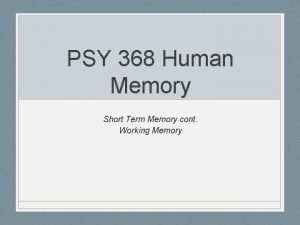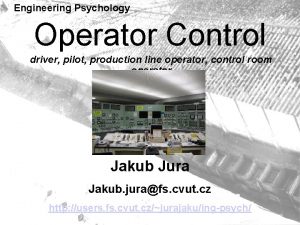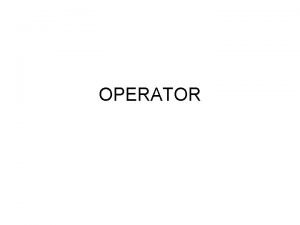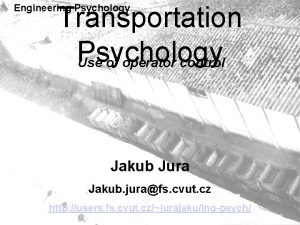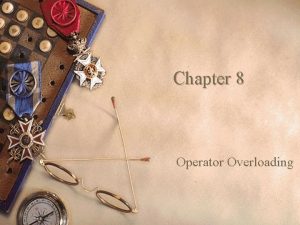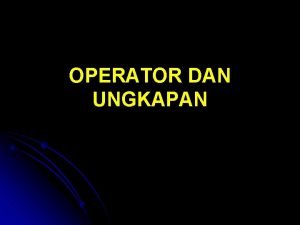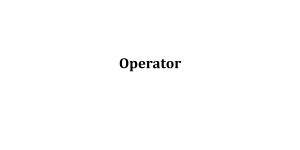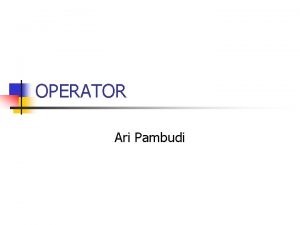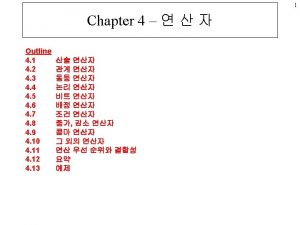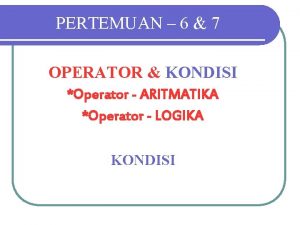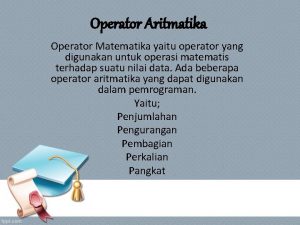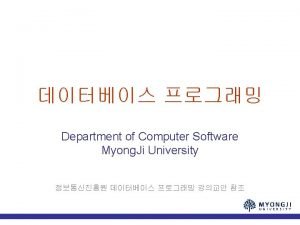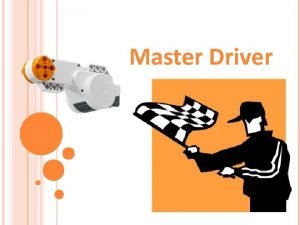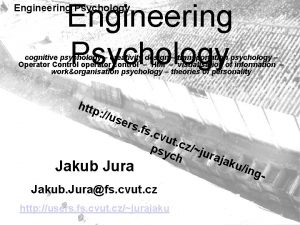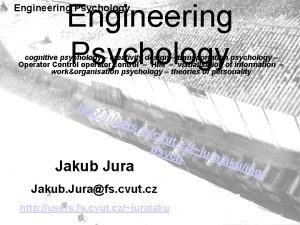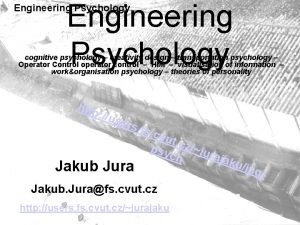Engineering Psychology Operator Control driver pilot production line










































- Slides: 42

Engineering Psychology Operator Control driver, pilot, production line operator, control room operator Jakub Jura Jakub. jura@fs. cvut. cz http: //users. fs. cvut. cz/~jurajaku/ing-psych/

Outline of this lesson Human-machine system operation • • • Model of the operator Information theory Types of operator control task Demand-Resource Theory Flow phenomena Reacting time measuring

Fukushima

Control system Actors Sensors Model of the Automatic Controled System output action

Human Decision MS SS Model of Operator Controled System output action

Model of operator control Operator Sensoric. Internal proceses Motoric processes Sensation Perception Thinking, decision making, problem solving. Behaviour, Motoric func. Handlers Pilot lamps Controled system Actors Function and principles of Sensors controled sys.

Cognitive model of the operator

EMĚ – power station control room

Fukushima Nuclear power station

Stokehold

Highway Dispatching


Information Theory in Operator Control • A mathematical tool for quantification of the information’s flow. • What is information? Sender – Reduction of uncertainty Information channel Is IR IS= Sended information IR= Received information IT= Transmited information IT Receiver

Information Theory in Operator Control – real model – IS= Sended information – IR= Received information – IT= Transmited information – IL= Lost information – INo= Nois information INo Sender Is IT < Is IL IR Receiver

Quantification of information I = -log 2 (pi), pi is the probability of occurrence of event i

Simonovov’s theory of emotions – E … Strenght of the emotion – M … Strenght of the motivation – In… Information necessary – Ia … Information accessible • E = M(Ia-In) – In < Ia = -E … negative (unhedoné emotion) – In > Ia = +E … positive (hedone emotion)

• Overload Demands Demand-Resource Theory – reduce demand – increase resources • Underload – increase demand – reduce resources Y X Flow zone anxiety fear distress Axy Ayy Axx boredom x y Resources

Example of over and under-load of Operator

Observability of over and under-load • Stress or boredom behaviour. • Uneven rhytm of work. • Analysis of the pushing of the vigilance button. http: //www. prototypy. cz/sergeje/techpop. php


Reacting time 1. Basic reaction to basic stimulus. • Types of stimulus: – Auditive … mean value μ(RT-aud) = 150 ms – Visual … mean value μ(RT-vis) = 200 ms 2. 3. • • Target and non. Target stimulus More reactiones to more stimuluses. Reacting with choice Plus cca 50 ms to a one choice.

Basic task of operator control Operator Sensoric Motorické Internal proceses procesy Perception of a signal Decision push the button Push the button Button Lamp Controled system Aktors Functional principles of Sensors controled sys.

Reacting time measuring schema Simple signal simple reaction Reaction time Signal Button

Reacting time measuring schema Target end non. Target signal simple reaction Non Target Signal Reaction time Button

Reacting time measuring schema Target end non Target signal simple reaction Reaction time Signal A Signal B Signal C Button B Button A Button C

• http: //www. humanbenchmark. com/tests/ reactiontime/index. php

B e to tent n i l c In sis ents n o t Inc nten co e to A lin Inc A B Cognitive disonance C (Leon Festinger ) Add the integrate concept • Holding conflicting ideas simultaneously. • People have a motivational drive to reduce dissonance. • Dissonance is reduced by: – changing attitudes, beliefs … – justifying, blaming, denying – The Fox and the Grapes … fox sees some high-hanging grapes and wishes to eat them. When the fox is unable to think of a way to reach them, he surmises that the grapes are probably not worth eating, as they must not be ripe or that they are sour.

Decision Making • • • • typy řešení problému (problem solving) Kostr vědomí proces, při kterém redukujeme rozdíl mezi existující a požadovanou situací. programové neprogramové Modes of inquiry: (kognitivní aktivity) silný analytický experiment (fyzika) – zjišťování neznámých okolností středně silný analytický experiment (biologie, psychologie, sociologie, zemědělství) – používá logiku a statistickou inferenci slabý analytický experiment – kavaziexperimenty, přehledová šetření silné kvaziracionální usuzování – stat. analýza, MSM, analýza usuzování středně slabé kvaziracionální usuzování – intuitivní užívání poznatků slabé kvaziracionální usuzování – laické řešení – nakonec vůbec nevíme jakými postupy jsme došli k řešení, implicitní logika, nemanipulujeme s proměnnými, nejasná datová základna. 1, 2, 3 – aktivní přistup k manipulaci s proměnnými Postup: – – identifikace problému generování alternativních řešení výběr řešení aplikace řešení a jeho hodnocení

Confusion • Percept and concept … stroop efect • Say the word loudly. • Say the word whisper loudly.

Stroop efect Blue

Green

white

Yellow

mangeta

Blue

Green

Green

Industrial acident • Chemical – Bhopal – Minamata – Seveso • Nuclear – – Fukushima Chernobyl Three Mile Island Windscale • Explosive • D

• Stroopův efekt • Pokud čtu název barvy, bez ohledu na barvu textu je reakční čas kratší, než když „říkám název barvy“ , v které je text napsán bez ohledu na obsah textu. • Determinace zkušenosti a učení. • Stroopův pokus-interference čtení s barvou • Stroopův efekt-Roberta Klatzky 1935 -analýza procesů obs. automatizované složky, automatizace-vůlí neovlivnitelná-při dešifrování předmětů a slov-barva slova- tento jev při souběhu pomal a rychlého procesu; • Badatelka americka se zabyva procesy vnimani, ktere jsou nepristupne nasi vedome zkusenosti. Analyza procesu obsahujicich automatizovane slozky (dovednosti). Takove automatizaci nelze volni regulaci zamezit, muzeme sledovat pri desifravanipredmetu a slov-Stroopuv efekt.

• osobní časová rovnice • časové diskrepance při Wundtových (Lipsko) komplikačních pokusech. . ZO má při zazvonění zvonku udat polohu ručičky na ciferníku. ZO obvykle udávají dřívější polohu ručičky, než jaká byla při úderu zvonku, to znamená že dochází k časovému posunutí • Rozdíly mezi polohou ručičky a údajem ZO vykazují značnou individuální variabilitu. • Zachycuje změny v časovém průběhu činnosti • Dále se na pozornosti zkoumá 1. intenzita, 2. kolísání, 3. odklonitelnost. • Stern: vliv minulých zkušeností na současné prožívání času.

• závislost x nezávislost na poli Witkun 1948, 1962 • Jedná se o kognitivní styl: field independece / dependece • Účinnost nápovědí z vnitřního a vnějšího prostředí. • RFT (Rod-and-Frame-Test): je svítící pruh ve vertikální poloze v rámu. Rám i ZO mění plánovitě svou polohu. • Prokázalo se, že lépe se při pilotáži v mlze osvědčují „nezávislí na poli“. Ženy a děti bývají více závislé na poli. Lidé závislí na poli mají větší tendenci orientovat se na

• podprahové vnímání • Podnět nevede ke zjistitelné (uvědomitelné) reakci. • Vernon – vědomí je jen okrajové • Miller – pokus se Zennerovými kartami (kolečko, křížek, vlnovka, . . Vůbec jsi to nezaregistroval, ale byl jsi schopen odpovědět co na kartičce bylo. • Například na tachistoskopu (nestihne zaregistrovat), nebo při nutnosti rozdělit
 Membuat alur proses produksi multimedia
Membuat alur proses produksi multimedia Pada tipe data boolean berlaku operator-operator
Pada tipe data boolean berlaku operator-operator Pada tipe data boolean, berlaku operator-operator :
Pada tipe data boolean, berlaku operator-operator : Berbagai macam operator beserta prioritas operator
Berbagai macam operator beserta prioritas operator Unary operator and binary operator
Unary operator and binary operator Hand method for friction loss
Hand method for friction loss User mode driver framework
User mode driver framework Pneumatic circuit for double acting cylinder
Pneumatic circuit for double acting cylinder Hydraulic heater symbol
Hydraulic heater symbol Representative fraction
Representative fraction Major engineering problems in urea production
Major engineering problems in urea production Raw material checking procedure
Raw material checking procedure What is the meaning of production planning
What is the meaning of production planning Production activity control
Production activity control Quality control chart
Quality control chart Route sheet in production planning and control
Route sheet in production planning and control Production activity control
Production activity control Production activity control
Production activity control Production plan meaning
Production plan meaning Production planning and inventory control
Production planning and inventory control In-line production process eggs
In-line production process eggs Automated production lines
Automated production lines Carton production line factory
Carton production line factory Pc hollow sheet extruder
Pc hollow sheet extruder In-line production process eggs
In-line production process eggs Work on the production line is monotonous and lacks
Work on the production line is monotonous and lacks Positive psychology ap psychology definition
Positive psychology ap psychology definition Social psychology definition psychology
Social psychology definition psychology Social psychology ap psychology
Social psychology ap psychology Scope of psychology
Scope of psychology Social psychology definition psychology
Social psychology definition psychology Health psychology definition ap psychology
Health psychology definition ap psychology Engineering psychology definition
Engineering psychology definition Explain the meaning and nature of educational psychology
Explain the meaning and nature of educational psychology Social cognitive theory
Social cognitive theory Control techniques in research
Control techniques in research Visual sketchpad memory
Visual sketchpad memory What is system design in software engineering
What is system design in software engineering Forward engineering in software engineering
Forward engineering in software engineering Engineering elegant systems: theory of systems engineering
Engineering elegant systems: theory of systems engineering Elegant systems
Elegant systems Forward and reverse engineering
Forward and reverse engineering Modern control engineering
Modern control engineering

